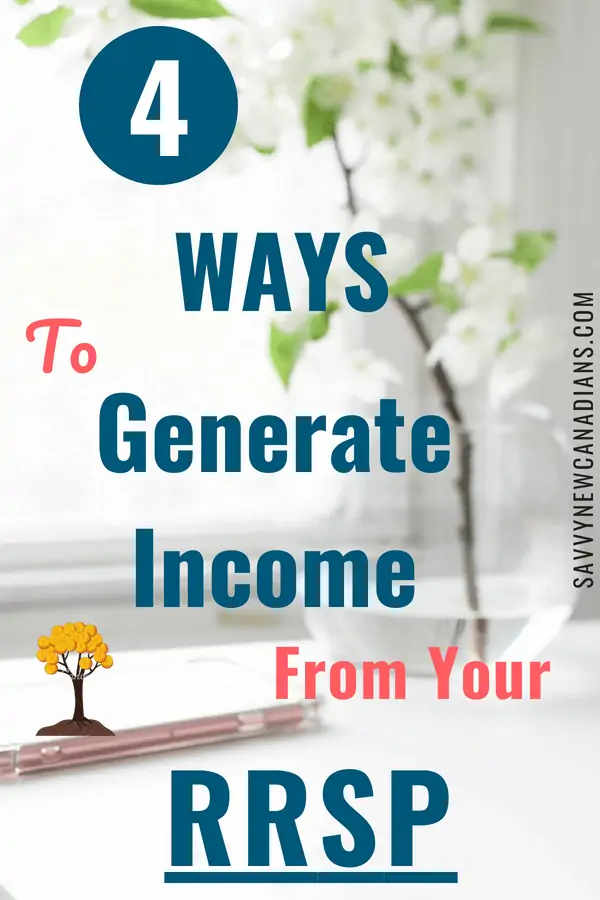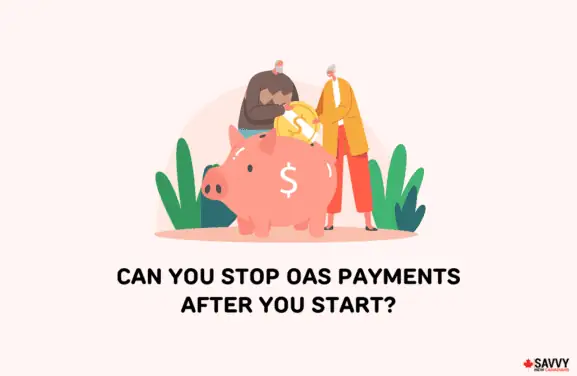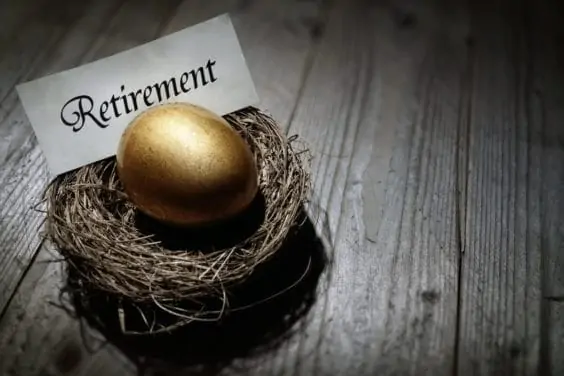Your Registered Retirement Savings Plan (RRSP) account is an excellent tool for saving toward retirement.
Whether you choose to retire early or plan to work until you are 65 years or older, at some point, you will want to start withdrawing income from your RRSP.
As long as you have “earned” income, you can continue to make contributions to an RRSP account up until age 71, when the government requires you to close your RRSP account and do one or a combination of three things with your RRSP funds:
- Transfer the funds into a Registered Retirement Income Fund (RRIF) account
- Purchase an annuity
- Withdraw the cash
All three options above can provide a means to generate income from your RRSP assets in retirement.
Option #1 – Transfer Funds to an RRIF
This is the most popular option utilized by Canadians. An RRIF allows you to continue investing your money while deferring taxes until you make withdrawals.
Unlike your RRSP account, you cannot make new contributions to an RRIF, and you must withdraw at least a minimum amount of income every year.
The minimum amount is based on a set of rules that consider your age (or that of your spouse), a percentage set by the government, and the size of your account.
You can withdraw more than the minimum amount at any time, and taxes are due on any income you withdraw from an RRIF. If money remains in your RRIF after you pass away, it will go to your designated beneficiaries (e.g. spouse) or your estate.
Related: Everything You Need to Know About RRIFs
Option #2 – Purchase an Annuity
An annuity is an insurance product that pays you a steady, fixed, and guaranteed income stream for a specified period and, in some cases, for life. There are two main types of annuities:
Fixed Term Annuity: These will pay you a guaranteed income for a specified number of years, for example, 10, 15, or 20 years into the future. They usually do not extend beyond age 90. If you die before the annuity term has passed, leftover payments will go to your beneficiary.
Life Annuity: These annuities pay you a guaranteed fixed income for life. After death, the annuity payments stop.
Annuities are great for setting up a guaranteed income for life – no matter how long you live or how financial markets fare.
That said, the income payouts you receive will depend on your initial purchase amount, prevailing interest rates, the insurance company you sign up with, your age/gender/health status (i.e. life expectancy), and other riders on your contract.
You must claim income received on your tax return and pay any taxes due.
Related: The Place of Annuities in Your Retirement Planning
Option #3 – Withdraw Cash
If you decide to withdraw your RRSP as lump sum cash, you will be required to pay taxes immediately, usually by way of withholding taxes that the bank holds back and pays on your behalf to the government.
This immediate tax hit is why lump sum cash withdrawal of RRSP assets is not the most popular approach. Tax is withheld at source based on the following percentages:
| RRSP Withdrawal | Withholding Tax Rate (excluding Quebec) | Withholding Tax (Quebec resident)* |
| Up to $5,000 | 10% | 21% |
| $5,000 to $15,000 | 20% | 26% |
| $15,000 + | 30% | 31% |
For example, if your cash withdrawal was for $200,000, your bank will pay you $140,000 and pay the remainder of $60,000 as withholding taxes to the government (excluding Quebec).
Depending on your total income for the year (and marginal tax rate), you may owe additional taxes when you file your income and benefit tax return.
The cash received can be put in several income-bearing investments, including bonds, GICs, dividend-paying stocks, high-interest savings accounts, etc.
If you have contribution room in your TFSA, you can also make these investments in that account to shield the interest income earned from taxes. There is no age limit to the use of TFSAs.
Option #4 – Consider a Combination
A retiree can use a combination of some or all three options for their RRSP funds.
For example, they may withdraw cash during periods when they are yet to be eligible for other pensions or government benefits. If their total income during this time is low, taxes due may be minimal.
They may also choose to split some of their RRSP funds into (i) an annuity that pays guaranteed income for life to top-up other OAS, CPP, and pension benefits and (ii) an RRIF that continues to grow and pay out an income as well.
Putting It All Together
Retirees in Canada have a variety of sources of income in retirement. These include:
- Government Benefits – Old Age Security (OAS) pension, Guaranteed Income Supplement (GIS), and Canada Pension Plan/Quebec Pension Plan (CPP).
- Workplace Pensions, including defined benefit and defined contribution pension plans.
- RRSP
- Tax-Free Savings Account
- Other non-registered investment accounts
When structuring your retirement income, you should be thinking about all your sources of income, taxes, retirement expenses, and how much income you will need (pre-tax and after-tax). RRSPs are just one piece of the puzzle.
What’s your risk tolerance? Health status and life expectancy? Do you want to leave assets to a spouse/kids? What impact will inflation have on your purchasing power?
If you are not sure how best to ensure your funds serve you throughout retirement, consider having a chat with a financial advisor.





Yikes! That’s a huge amount of withholding tax when you withdraw cash over 15 grand!
@Curious Frugal: Yes. I think its meant to shock people into considering other options for withdrawing their funds. 😉
if you draw it out in increments of $5000 each month do they only hold 10%. Seems like this would be a solution as opposed to withdrawing one big lump sum.
Either was you would get it back at tax time because it’s an obvious over payment if this was you only income.
Great summary. Planning is critical to reduce tax but also to ensure your RRSP withdrawal don’t affect your OAS or GIC (clawback), sometimes it may be better to withdraw early.
@Caroline: Yes, there are scenarios where it makes sense to start drawing down your RRSP funds early, for example, if you have periods of lower or no employment income before you retire. The taxes will be minimal as your marginal tax rates should be lower during these times. If you don’t need the funds when withdrawn, you can simply put it in a TFSA if you have contribution room.
Very complete information. So many seniors aren’t aware of all, if any of their options.
Very complete information. So many seniors aren’t aware of all ,if any of their options.
@Felicia: Glad you found it useful!
Can you provide any information on armslength and non-armslength mortgages?
I cannot decide if a Helios 2 from Desjardin guaranteed investment fund is a good option at this time to convert my RRSP I am 65 and hoping to retire at 66 They say my draw is 14705.00 per year which is not a lot to live on. Any ideas. I will receive CPP and OAS
@Marguerite: Unfortunately, I am not familiar with the Helios 2.
I made a lengthy comment about the government program to start OAS payments automatically at age 65, and I just wanted to say please feel free to check my numbers. In them, I presume I will get the max CPP, but haven’t checked lately. My 2021 income is ~$110k/yr, but I expect it to drop starting in 2023 or so.
Jamie SImm